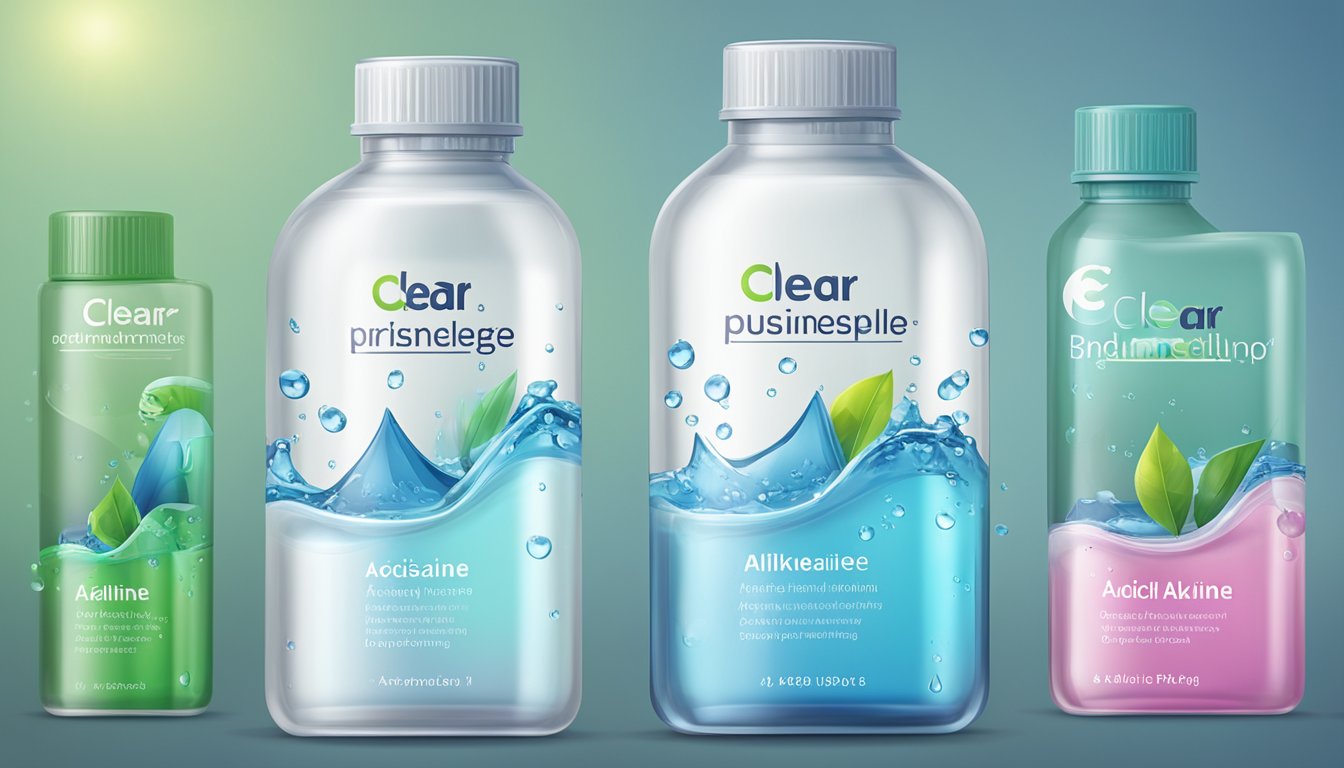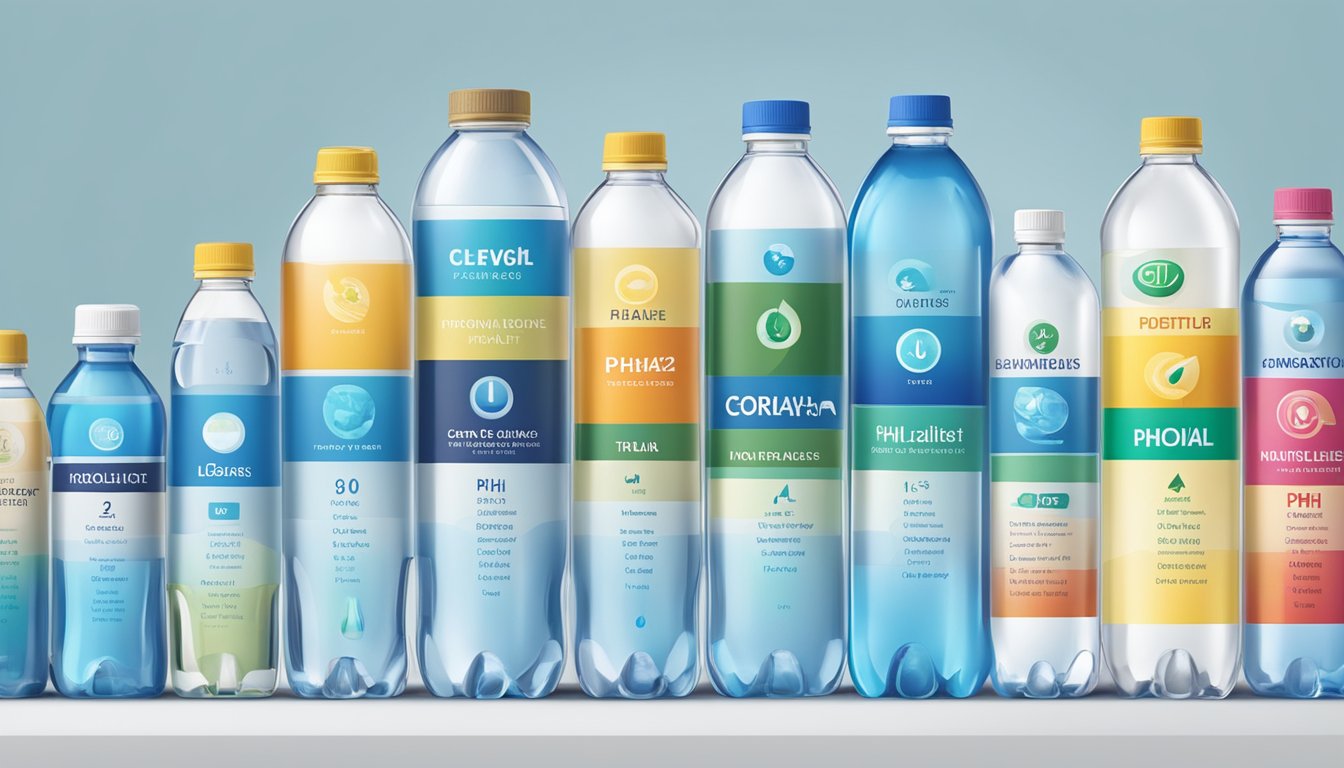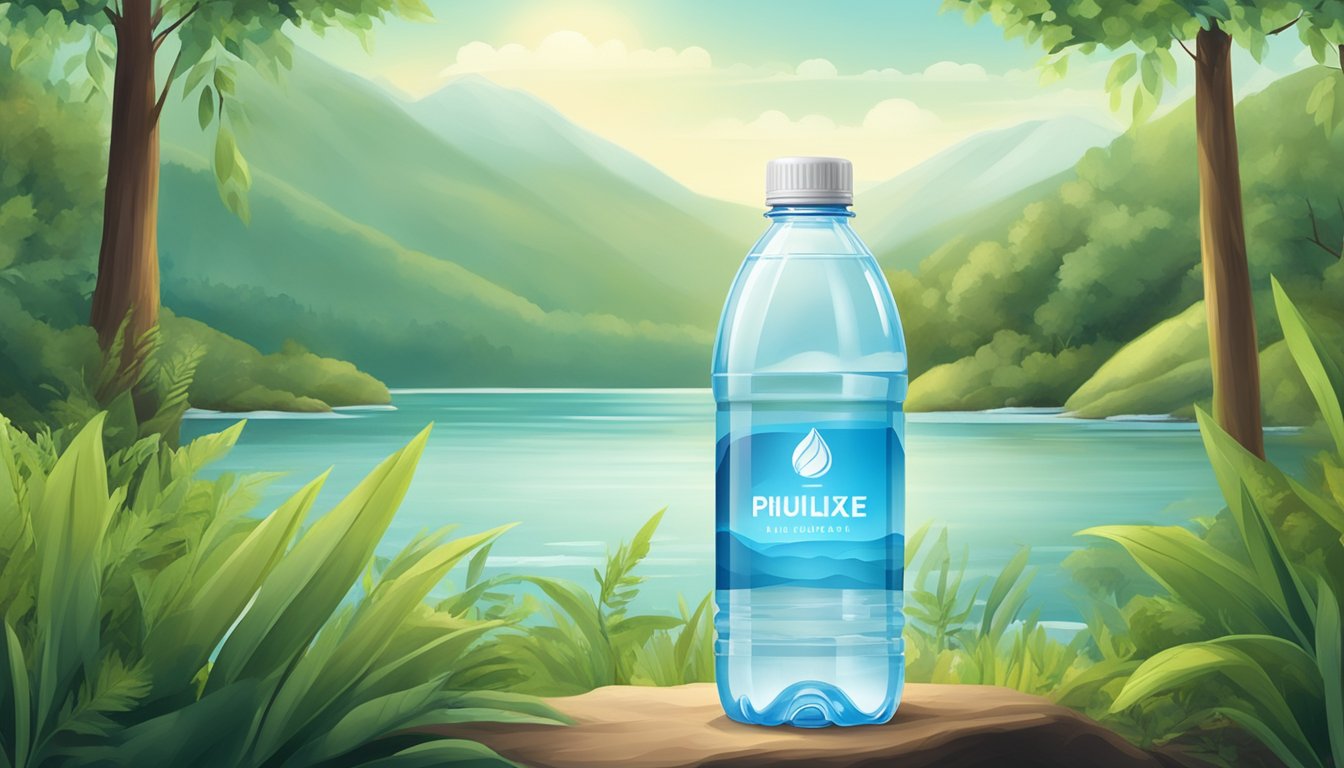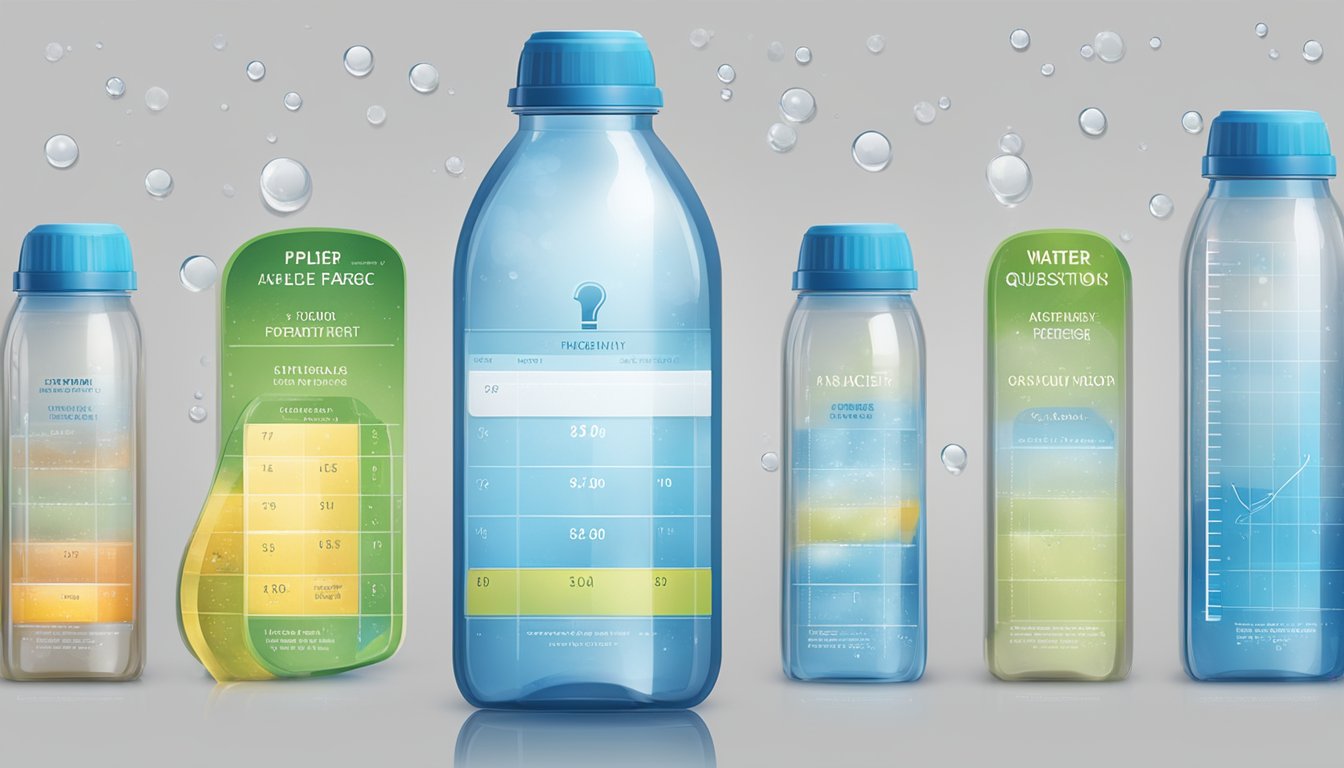When it comes to staying hydrated, many people turn to bottled water as their go-to drink of choice. However, not all bottled water is created equal. One factor that can vary greatly between brands is the pH level of the water. Understanding the pH level of the bottled water you drink can help you make informed decisions about your hydration needs.

The pH level of bottled water can range from acidic to alkaline, with a pH of 7 being neutral. While some brands may have a pH level that falls within the ideal range of 6.5 to 8.5 for drinking water, others may have a pH level that is significantly higher or lower. The pH level of bottled water can impact both the taste and the potential health implications of the water.
So, what should you look for when choosing a bottled water brand? In this article, we’ll explore the topic of water brand pH levels in depth, including how pH levels are measured, the health implications of drinking water with high or low pH levels, and some of the environmental considerations associated with bottled water consumption. By the end of this article, you’ll be better equipped to make informed decisions about the bottled water you choose to drink.
Key Takeaways
- The pH level of bottled water can impact the taste and health implications of the water.
- The ideal pH range for drinking water is between 6.5 to 8.5.
- When choosing a bottled water brand, it’s important to consider the pH level, as well as environmental considerations.
Understanding PH Levels in Bottled Water

When it comes to choosing the right bottled water, one of the most important factors to consider is the pH level. The pH level of water is a measure of its acidity or alkalinity, and it can have a significant impact on both the taste and the health benefits of the water.
The Science of PH and Its Importance
pH is a measure of the concentration of hydrogen ions in a solution, and it is measured on a scale of 0 to 14. A pH of 7 is considered neutral, while anything below 7 is acidic and anything above 7 is alkaline. The ideal pH for drinking water is between 6.5 and 8.5, as this range is considered to be safe and healthy for human consumption.
The pH level of water can have a significant impact on its taste and health benefits. Water that is too acidic can have a sour or bitter taste, while water that is too alkaline can taste bitter or metallic. Additionally, water that is too acidic or too alkaline can be harmful to your health, as it can cause digestive issues and other health problems.
PH Testing Methods and Accuracy
There are several methods for testing the pH level of water, including using a pH meter or test strips. pH meters are typically more accurate than test strips, but they can be more expensive and require calibration. Test strips are a more affordable option, but they can be less accurate and can be affected by factors such as temperature and humidity.
When testing the pH level of bottled water, it is important to ensure that the testing method is accurate and reliable. Some brands may claim to have a certain pH level, but this may not always be accurate. Additionally, the pH level of water can change over time, so it is important to test the water regularly to ensure that it is within the safe and healthy range.
Comparing PH Levels Across Popular Brands
There are many popular bottled water brands on the market, each with its own unique pH level. Some of the most popular brands include Fiji, Voss, Evian, Dasani, Aquafina, Core, Essentia, Icelandic, Nestle Pure Life, Penta, Smart Water, Just Water, and Eternal.
When comparing the pH levels of these brands, it is important to consider factors such as the source of the water, the testing method used, and any additional health benefits or additives. For example, Smart Water offers an alkaline version with a pH level of 9+, while Santevia Mina Alkaline Pitcher claims to increase the pH level of tap water to 9.5.
Overall, when choosing a bottled water brand, it is important to consider the pH level and ensure that it falls within the safe and healthy range. By understanding the science of pH and the testing methods used, you can make an informed decision and choose a brand that meets your needs and preferences.
Health Implications and Environmental Considerations

When it comes to choosing the right water brand, pH levels can play a significant role in your health and well-being. Different pH levels can have various effects on your body, and it is crucial to choose a water brand that can help you maintain a balanced pH level.
Balancing Body pH for Optimal Health
Your body’s pH level is a measure of its acidity or alkalinity. A balanced pH level is essential for optimal health, and it can help prevent various health issues such as acid reflux, osteoporosis, and even cancer.
Drinking water with a pH level of 7.4 is considered optimal for maintaining a balanced pH level in your body. Natural spring water and alkaline water are two examples of water brands that can help you achieve this balance.
Natural spring water is sourced from underground water sources and is naturally rich in minerals such as calcium and magnesium. These minerals can help balance your body’s pH level and provide essential nutrients to your body.
Alkaline water, on the other hand, has a higher pH level than tap water, which makes it more alkaline. Alkaline water is believed to have several health benefits, including reducing acid reflux and improving hydration.
Environmental Impact of Bottled Water Production
While choosing a water brand with the right pH level is essential for your health, it is also crucial to consider the environmental impact of bottled water production.
Bottled water production can have a significant impact on the environment, from the source of the water to the packaging and transportation. Natural spring water is often sourced from remote locations, which can lead to environmental damage and disruption of local ecosystems.
Furthermore, the production of plastic bottles can lead to pollution and contribute to the growing plastic waste problem. It is essential to choose a water brand that uses sustainable packaging and production methods to reduce its environmental impact.
In conclusion, choosing the right water brand with the optimal pH level can have significant health benefits. However, it is crucial to consider the environmental impact of bottled water production and choose a water brand that uses sustainable production methods. Natural spring water and alkaline water are two examples of water brands that can help you achieve a balanced pH level while also considering the environment.
Frequently Asked Questions

Which bottled water brands offer the most alkaline pH levels for a revitalising hydration experience?
If you’re looking for a bottled water brand with a high pH level, you might want to consider Evian, Voss, or Fiji Water. These brands are known for having a pH level of 7.5 or higher, which is considered alkaline. Alkaline water is believed to help neutralise acid in the body and provide a range of health benefits. Keep in mind that these brands may be more expensive than other options on the market.
Can you believe the acidity in some water brands? Which ones rank as the most acidic?
It’s surprising to learn that some bottled water brands have a pH level below 7, which is considered acidic. Some of the most acidic brands include Dasani, Smartwater, and Aquafina. If you prefer a less acidic option, you might want to consider brands like Fiji Water, Evian, or Voss, which have a pH level of 7.5 or higher.
Ever wondered about the pH level of Aquafina? How does it compare to other bottled waters?
Aquafina has a pH level of around 6, which is considered slightly acidic. This is lower than other popular brands like Evian, Voss, and Fiji Water, which have a pH level of 7.5 or higher. If you’re looking for a more alkaline option, you might want to consider one of these brands instead.
Curious about the pH levels in your favourite spring waters? Which brand tops the chart for balanced hydration?
The pH level of spring water can vary depending on the source and brand. However, most spring water brands have a pH level between 6.5 and 8.5, which is considered neutral to slightly alkaline. Some popular spring water brands include Poland Spring, Arrowhead, and Crystal Geyser. If you’re looking for a balanced hydration experience, these brands might be worth considering.
What’s the buzz about hydrogen carbonate in water brands? Which ones should you look out for?
Hydrogen carbonate, also known as bicarbonate, is a natural mineral found in some bottled water brands. It’s believed to help neutralise acid in the body and provide a range of health benefits. Some bottled water brands that contain hydrogen carbonate include Vichy Catalan, Gerolsteiner, and Badoit. Keep in mind that these brands may be more expensive than other options on the market.
Is sipping on a 9.5 pH water really the secret to optimal health? Let’s find out which brand can offer you this!
While some people believe that drinking alkaline water with a pH level of 9.5 or higher can provide a range of health benefits, there is limited scientific evidence to support these claims. However, if you’re interested in trying a high pH water, you might want to consider brands like Essentia, Alkaline88, or Flow. These brands are known for having a pH level of 9.5 or higher. Keep in mind that these brands may be more expensive than other options on the market.




